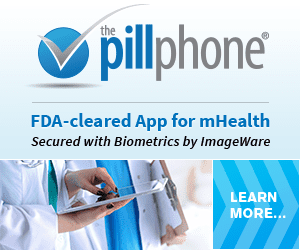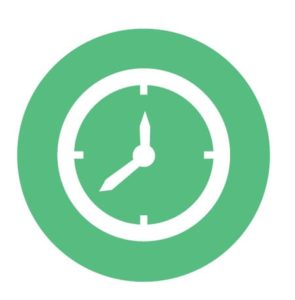February is Healthcare Month at FindBiometrics. Last week we started our focused coverage with a primer on this month-long topic, and it became clear that the most visible area of application for biometrics in the health space is patient ID and electronic health records. But biometrics do have uses beyond properly managing patients, cutting down heath fraud, and eliminating duplicate records. That’s what we’re going to focus on today as we examine three applications of biometric authentication in healthcare that fall outside the realm of patient ID management.
Medication Access Control
 While health data is arguably the most sensitive information associated with one’s identity, it isn’t the only thing that needs protecting in a health-space. Controlled substances need to be secured and managed too, and biometrics are just the right solution for the job. Physical access control solutions like the biometrically secured drug cabinets from RX Safes ensure that dangerous and valuable medications can only be accessed by enrolled individuals. Going even a step further, there are some such cabinets that keep a record of the users who biometrically access the protected substances, and what they remove. Because the access is dependent on the medical professional’s fingerprint, which can’t be lost, copied, forgotten, or stolen, biometrics add a level of accountability and assurance to the access and use of controlled substances that an old fashioned key and lock, or standard key-card, simply can’t match.
While health data is arguably the most sensitive information associated with one’s identity, it isn’t the only thing that needs protecting in a health-space. Controlled substances need to be secured and managed too, and biometrics are just the right solution for the job. Physical access control solutions like the biometrically secured drug cabinets from RX Safes ensure that dangerous and valuable medications can only be accessed by enrolled individuals. Going even a step further, there are some such cabinets that keep a record of the users who biometrically access the protected substances, and what they remove. Because the access is dependent on the medical professional’s fingerprint, which can’t be lost, copied, forgotten, or stolen, biometrics add a level of accountability and assurance to the access and use of controlled substances that an old fashioned key and lock, or standard key-card, simply can’t match.
A biometric medication management system doesn’t just have to be aimed at doctors, nurses, and clinic staff either. The TAD (Take as Directed) pill dispenser from MAP Health Management recently incorporated biometrics from Intelligent Solutions. The aim is to curb substance abuse by ensuring that only the designated, biometrically enrolled patient can access their medication. Furthermore, the solution is connected to a data management platform that allows assigned professionals to monitor drug usage. Yet another example of connected biometrics having the versatility to serve a niche application in a high risk space.
Biometrics Keep Clinicians Accountable
 Because healthcare spaces are so high risk, dealing with life or death scenarios and managing sensitive data all the time, it can be easy to gloss over the fact that hospitals, pharmacies, clinics, and the like are also workplaces. As such there is inevitably some overlap between healthcare applications of strong authentication and those that could also benefit any given office. This is the case with time and attendance in healthcare. A biometric record that can track the hours clocked and general availability of professionals in a healthcare space can be invaluable, meaning the difference between an incoming patient receiving treatment or going without care.
Because healthcare spaces are so high risk, dealing with life or death scenarios and managing sensitive data all the time, it can be easy to gloss over the fact that hospitals, pharmacies, clinics, and the like are also workplaces. As such there is inevitably some overlap between healthcare applications of strong authentication and those that could also benefit any given office. This is the case with time and attendance in healthcare. A biometric record that can track the hours clocked and general availability of professionals in a healthcare space can be invaluable, meaning the difference between an incoming patient receiving treatment or going without care.
Again, it’s easy to dismiss healthcare spaces as too important to be just another job, but medical professionals are not unimpeachable. The most visible deployments of healthcare time and attendance, in India, are proof. In 2014, shocking levels of truancy in medical dispensaries in New Delhi prompted the widespread adoption of biometric time and attendance measures. Last year, the state of Haryana also turned to biometric time and attendance in the wake of high profile incident involving an unattended pregnant woman in a Panipat healthcare center. Health Minister Anil Vij asserted at the time that the move was intended “to ensure presence of doctors and paramedical staff.”
It stands to reason that if biometric time and attendance solutions can increase staff accountability in the enterprise, the same should be true for workplaces in healthcare.
Secure Lines of Communication
 With innovations in mobility, the communication lines between medical professionals and patients are strengthening and allowing not only for greater freedom on behalf of those receiving care, but also better oversight from the caregivers. In some cases this relationship has manifested in vital biometrics-powered home care solutions that provide 24 hour care to patients with chronic conditions, freeing up hospital space and ensuring more comprehensive and complete care than has previously been possible.
With innovations in mobility, the communication lines between medical professionals and patients are strengthening and allowing not only for greater freedom on behalf of those receiving care, but also better oversight from the caregivers. In some cases this relationship has manifested in vital biometrics-powered home care solutions that provide 24 hour care to patients with chronic conditions, freeing up hospital space and ensuring more comprehensive and complete care than has previously been possible.
But biometrics are also securing literal communications channels between caregiver and patient thanks to mHealth apps like pillphone, an off-the-shelf software solution from ImageWare Systems. pillphone is intended for the express purpose of increasing medication adherence, keeping doctors, nurses, clinical professionals and designated family members in touch with patients via two way communications. As the information is especially sensitive, pillphone is secured with multimodal biometric authentication. The biometric security is an enabler in this case—an important foundational component of a system intended to serve the needs of uses with complex medication needs.
*
Stay posted to FindBiometrics throughout February as we continue to examine biometric healthcare. Follow us on Twitter and make sure you see all of our special featured and guest content.
Healthcare Month 2017 is made possible by our sponsor: ImageWare Systems


Follow Us